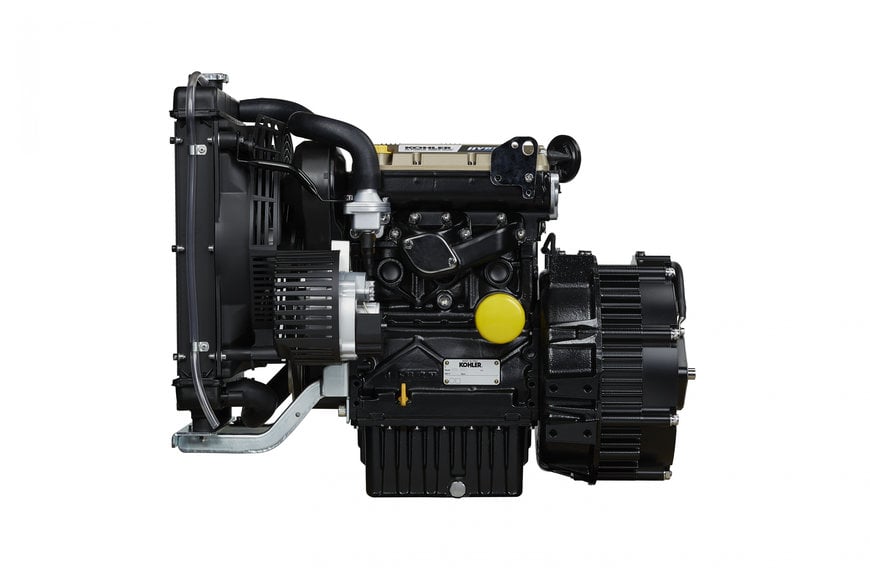KOHLER presents K-HEM 1003
K-HEM, the hybrid electrical and mechanical combined power generation unit.

In light of the changes that the new emissions directive has brought to the off-road applications sector beginning on 1 January 2019, Kohler has added a product to its array that is capable of meeting the new needs of equipment manufacturers in this sector. A variety of energy sources are available on the market. Rather than investigate their different applications and individual characteristics in order to set them up in competition with each other, Kohler has chosen to integrate them, to pair them with each other, so as to reap all of their potential value.
This is the philosophy behind K-HEM 1003, the unit that generates power using a combination of a KDW 1003 18-kW diesel engine, compliant with Stage V standards and without DPF, and a 48-volt electric engine that guarantees 15 kW of peak power and 9 kW of continuous power. This means that the unit is capable of providing over 30 kW without the need for exhaust-gas aftertreatment systems. What’s more, K-HEM can operate as a generator for energy accumulation systems.
The features that the K-HEM hybrid unit offers have been designed to satisfy the needs of all those types of equipment that are distinguished by intermittent duty operation cycles that call for power peaks (welders, mowers, tractors with implements, etc.) and machines that chiefly run continuous low load operation cycles, which prevent them from reaching the temperatures necessary for passive regeneration to occur inside the particulate filter (aerial platforms, forklifts, etc.).
With K-HEM, the power base is provided by the combustion engine, while the power peaks are guaranteed by the electric engine. This system, which complies with the limits laid down in Stage V standards, makes it possible for machines to avoid derating and guarantees high productivity levels. Indeed, the built-in master control unit allows users to monitor and manage working modes and transitions based on their needs.
All of this translates into lighter, more compact and better-performing machines than in the past, capable of exploiting all of the benefits arising from the integration of mechanical power and electric power: less complex engines; an absence of aftertreatment systems; the ability to store and use excess energy produced thanks to the built-in alternator; energy recovery during braking and exhaust phases; the ability to manage operations using the master control unit; reduction of gas emission, noise and consumption rates; improved performance and power modulation, thanks to the integrated management of each operation.
- Greater efficiency. The diesel engine guarantees maximum performance in specific operating conditions. This means that the hybrid unit makes it possible to achieve optimal operating points more rapidly and more frequently, thereby increasing the efficiency of the operations performed and, consequently, the equipment’s productivity.
- Recovery operations. Thanks to the dual function of the electric component, which works both as a generator and as an auxiliary engine, it is possible to recover energy from the transmission system during the machine’s braking and exhaust phases and from the combustion engine itself during operating phases with low energy demands. The energy stored in the battery will thus be available when the machine requires more than the threshold of 18 thermal kW of installed power, exceeding even 30 kW. This translates into considerable savings in terms of emissions, consumption and installed thermal power.
- Perfect integration. Equipment manufacturers do not need to worry about possible installation problems, given that the hybrid unit can be integrated into a hydraulic system or a mechanical transmission, in the same way as a diesel engine.
- Precise management. The high degree of integration between the mechanical and hydraulic parts that the hybrid unit allows makes it possible to completely optimise machine management: each actuator can be managed by the hydraulic or electrical system depending on specific requirements, and controlled by the master control unit that oversees the system. The most striking example is that of agricultural attachments: the ability to disengage them from the mechanical system and manage them using the electrical system now allows for exceptional optimisation of operations.

